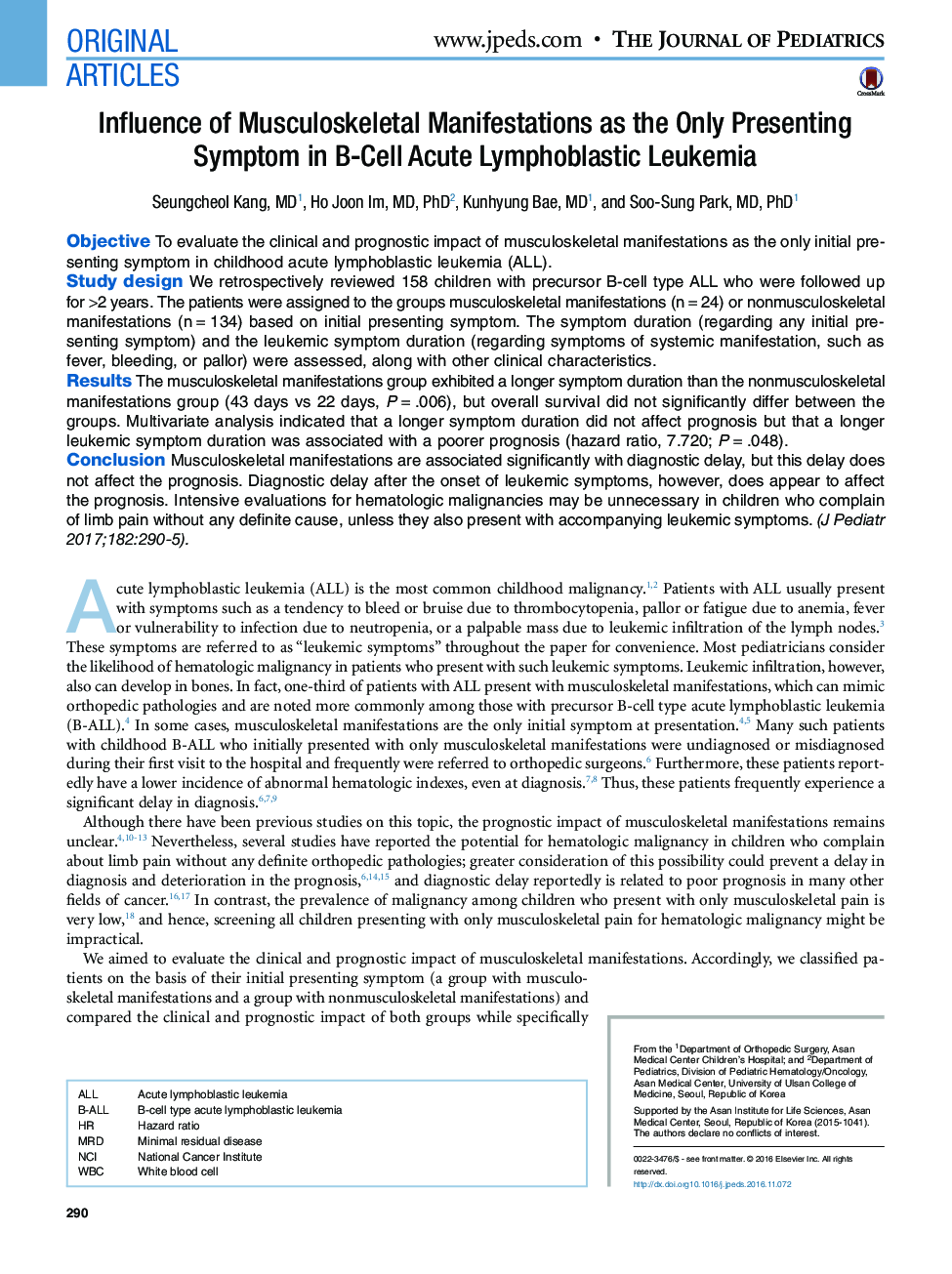| Article ID | Journal | Published Year | Pages | File Type |
|---|---|---|---|---|
| 5719688 | The Journal of Pediatrics | 2017 | 7 Pages |
ObjectiveTo evaluate the clinical and prognostic impact of musculoskeletal manifestations as the only initial presenting symptom in childhood acute lymphoblastic leukemia (ALL).Study designWe retrospectively reviewed 158 children with precursor B-cell type ALL who were followed up for >2 years. The patients were assigned to the groups musculoskeletal manifestations (nâ=â24) or nonmusculoskeletal manifestations (nâ=â134) based on initial presenting symptom. The symptom duration (regarding any initial presenting symptom) and the leukemic symptom duration (regarding symptoms of systemic manifestation, such as fever, bleeding, or pallor) were assessed, along with other clinical characteristics.ResultsThe musculoskeletal manifestations group exhibited a longer symptom duration than the nonmusculoskeletal manifestations group (43 days vs 22 days, Pâ=â.006), but overall survival did not significantly differ between the groups. Multivariate analysis indicated that a longer symptom duration did not affect prognosis but that a longer leukemic symptom duration was associated with a poorer prognosis (hazard ratio, 7.720; Pâ=â.048).ConclusionMusculoskeletal manifestations are associated significantly with diagnostic delay, but this delay does not affect the prognosis. Diagnostic delay after the onset of leukemic symptoms, however, does appear to affect the prognosis. Intensive evaluations for hematologic malignancies may be unnecessary in children who complain of limb pain without any definite cause, unless they also present with accompanying leukemic symptoms.
